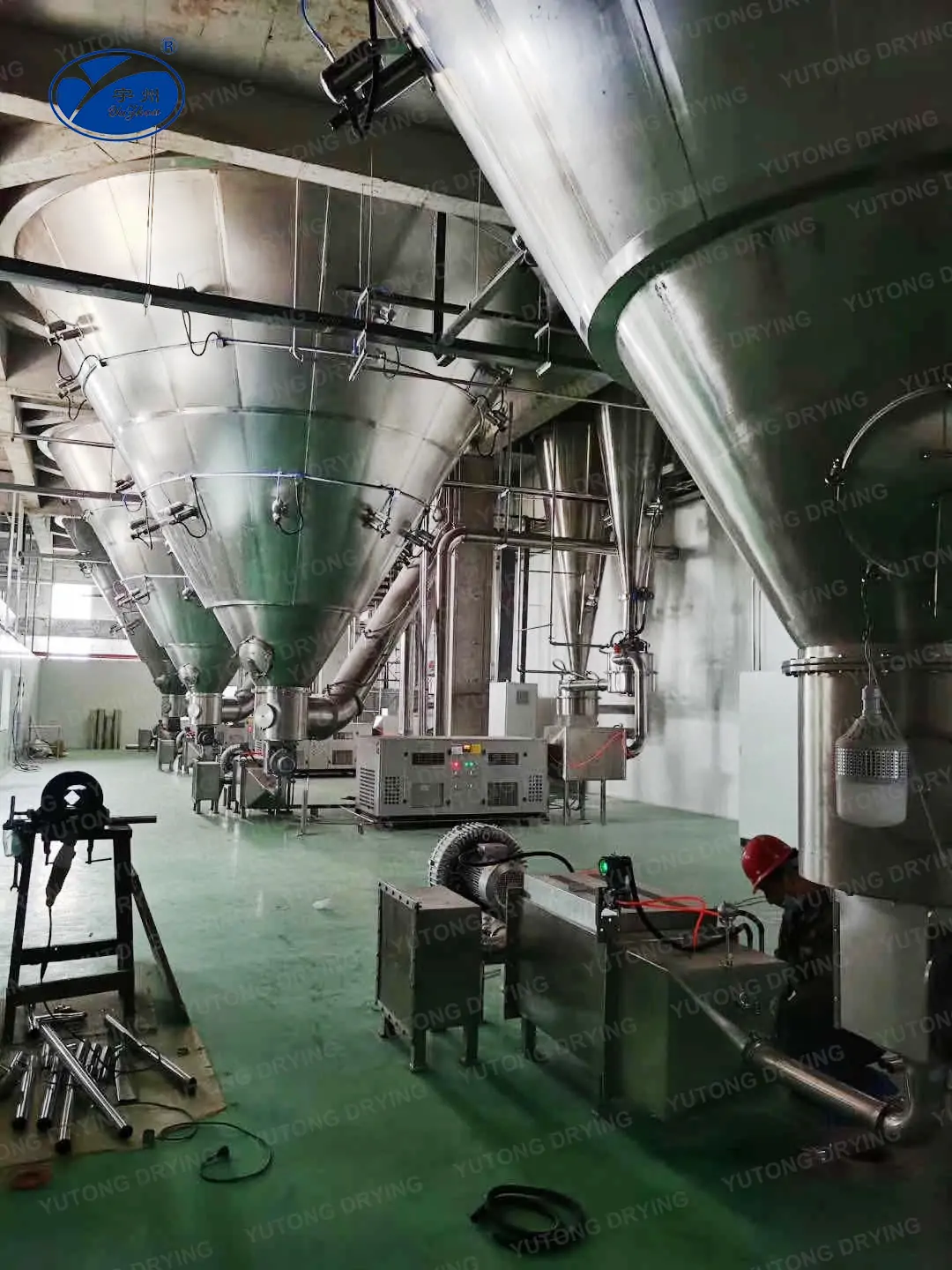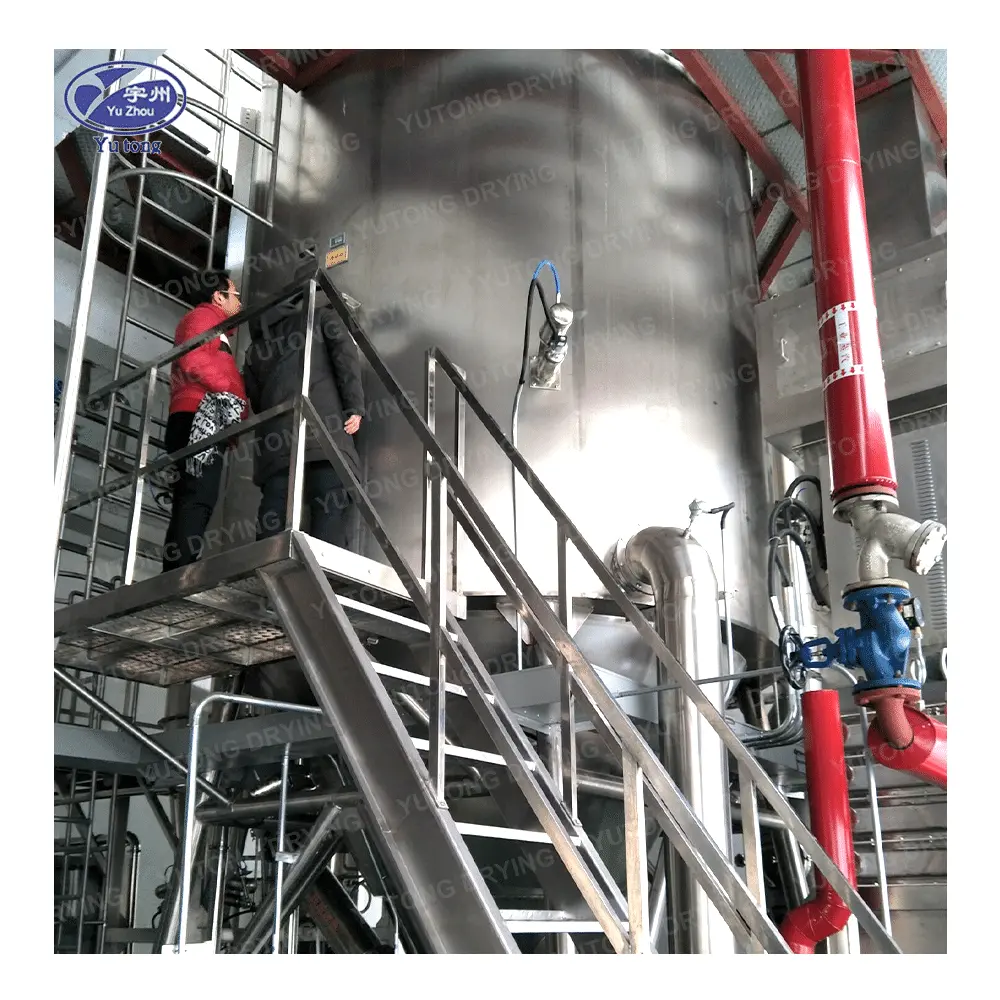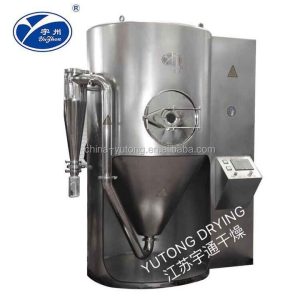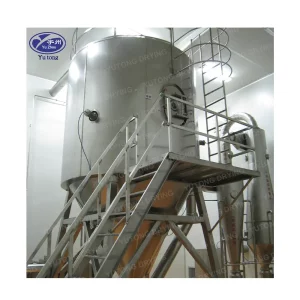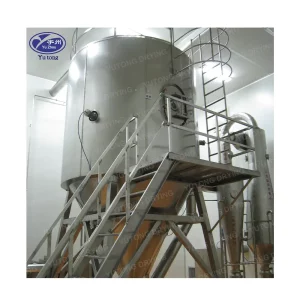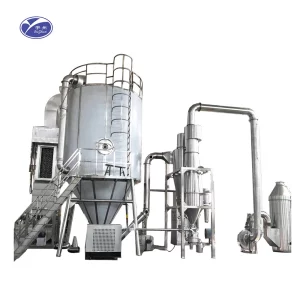Table of Contents
Product Detail
In the vast world of manufacturing and production, the MS 35 Spray Dryer stands out as a crucial piece of equipment. It plays a significant role in the spray drying process, transforming liquids into powders efficiently and effectively. This article dives deep into the intricacies of the MS 35 Spray Dryer and why it is a vital tool for industries ranging from pharmaceuticals to food production.
Understanding the Spray Drying Process
Spray drying is an essential method for producing dry powders from liquid or slurry materials. This process involves atomizing a liquid into a spray of droplets, followed by a drying phase in which the liquid evaporates, leaving behind dry particles. The MS 35 Spray Dryer by SPX is renowned for its efficiency in this process.
The Atomization Phase
The first step in the spray drying process is atomization, where the liquid is transformed into a mist of fine droplets. This is achieved using either a nozzle or a rotary atomizer within the MS 35. The precision in droplet size is crucial as it influences the drying rate and the final particle size of the powder. Achieving uniform droplet size ensures a consistent drying process, which is essential for maintaining product quality across batches.
The Drying Chamber Dynamics
Once atomized, the droplets are introduced into a drying chamber where they encounter a stream of hot air. The configuration of the drying chamber is designed to maximize heat transfer efficiency, ensuring rapid evaporation of moisture. As the droplets move through the chamber, temperature and airflow dynamics play a pivotal role in ensuring even drying. The MS 35 is engineered to maintain optimal conditions, adapting to varying feed characteristics to prevent overheating or under-drying.
Collection and Separation
After the drying phase, the dry particles are collected at the base of the dryer. The MS 35 utilizes advanced separation technologies to ensure efficient powder collection and minimize losses. Cyclonic separators and filters are often employed to capture even the finest particles. This stage is critical to ensuring that the final product is free from impurities and meets quality standards.
The MS 35 Spray Dryer: Features and Benefits
The MS 35 Spray Dryer by SPX is a testament to advanced engineering and design. It is specifically crafted to meet the diverse needs of various industries and offers a range of features that enhance its functionality and efficiency.
Innovative Design and Engineering
The MS 35 boasts a design that prioritizes both functionality and durability. Its robust construction is tailored to withstand the rigors of industrial use, ensuring reliability over extended periods. The materials used in its construction are selected for their resistance to corrosion and wear, promising a long operational lifespan even under demanding conditions.
Precision Control Systems
Central to the MS 35’s performance is its state-of-the-art control systems. These systems allow operators to finely tune parameters such as temperature, airflow, and feed rate with exceptional precision. This level of control is essential for maintaining consistent product quality, adapting to different materials, and optimizing the drying process for energy efficiency.
Energy Efficiency and Sustainability
In today’s environmentally conscious world, the MS 35 Spray Dryer stands out for its energy-efficient design. It is engineered to minimize energy consumption while maintaining high throughput. This not only reduces operational costs but also aligns with sustainability goals by lowering the carbon footprint of production processes.
Operating the MS 35 Spray Dryer
Understanding how to operate the MS 35 Spray Dryer is crucial for maximizing its potential. Operators must be familiar with its components and the best practices for running the equipment efficiently.
Initial Setup and Calibration
Setting up the MS 35 Spray Dryer requires careful calibration to align with desired output specifications. This involves configuring the atomizer settings, adjusting temperature profiles, and calibrating the feed pump. Proper setup ensures that the drying process runs smoothly and that the final product meets quality standards from the very first batch.
Routine Maintenance Protocols
Maintaining the MS 35 involves regular checks and servicing to ensure optimal performance. Key components such as the atomizer, air filters, and heating elements require periodic inspection and cleaning. A well-maintained spray dryer not only performs better but also has a longer service life, providing a better return on investment.
Ensuring Operator Safety
Safety is paramount in any industrial setting, and operating the MS 35 is no exception. Operators must be trained in safety protocols, including the use of personal protective equipment and emergency shutdown procedures. Regular safety drills and audits help maintain a safe working environment, prevent accidents, and ensure compliance with industry regulations.
Challenges and Solutions in Spray Drying
While the spray drying process offers numerous advantages, it also presents particular challenges. Understanding these can help operators mitigate potential issues and optimize the drying process.
Addressing Common Mechanical Issues
Mechanical challenges such as nozzle clogging and equipment wear can impact the efficiency of the spray drying process. Regular maintenance and timely replacement of worn parts are critical to preventing these issues. Implementing a robust maintenance schedule can help in identifying potential problems before they disrupt production.
Optimizing Process Variables
Maintaining consistent process variables such as temperature and airflow can be challenging, especially when dealing with varying feed compositions. The MS 35’s advanced control systems offer solutions by allowing real-time monitoring and adjustments. Operators can leverage these capabilities to fine-tune the drying process, ensuring product consistency and quality.
Training and Skill Development
One key solution to overcoming operational challenges is investing in operator training. Comprehensive training programs equip operators with the knowledge to handle complex scenarios and make informed decisions. This not only improves operational efficiency but also enhances the overall safety and reliability of the spray drying process.
Conclusion
The MS 35 Spray Dryer is an indispensable tool in modern manufacturing. Its ability to transform liquids into fine powders with precision and efficiency makes it a valuable asset across various industries. By understanding its features, benefits, and operational requirements, businesses can harness the full potential of the spray drying process and drive productivity.
Incorporating the MS 35 Spray Dryer into your production line could be the key to achieving consistent, high-quality products. With its robust construction, advanced control systems, and energy efficiency, the MS 35 is a wise investment for any industry looking to enhance its manufacturing capabilities. By prioritizing regular maintenance and operator training, businesses can ensure that their spray drying operations remain at the forefront of technological innovation and operational excellence.
Specifications
|
spec
|
ZPG-25
|
ZPG-50
|
ZPG-80
|
ZPG-100
|
ZPG-150
|
ZPG-200
|
ZPG-300
|
|
|
evaporation capacity(kg/h)
|
25
|
50
|
80
|
100
|
150
|
200
|
300
|
|
|
process amount of material liquid(kg/h)
|
25-34
|
50-68
|
80-108
|
100-135
|
150-203
|
200-270
|
300-406
|
|
|
output of finished pcoduct(kg/h)
|
4.8-7.2
|
9.2-14
|
14.8-22.4
|
18.4-28
|
24-42
|
36.8-56.4
|
55-85
|
|
|
solid content of material liquid( %)
|
18-30
|
|||||||
|
moisture content of finished product( %)
|
3-5
|
|||||||
|
electric power(kw)
|
63
|
132
|
153
|
204
|
246
|
330
|
||
|
heat source
|
Steam pius electricity
|
|||||||
|
Collecting method of product and its efficiency
|
Grade one or two or three stage cyclone wet dust remover is greater than or equal to 95%
|
|||||||
|
automatic control meters and instruments
|
indicator of not air and exhaust air temperature
|
|||||||
|
temperature of air inlet(℃)
|
160-220
|
|||||||
|
temperature of air outlet(℃)
|
80-100
|
|||||||
|
L
|
7000
|
8000
|
9800
|
11000
|
12200
|
14100
|
15000
|
|
|
overal dimensions(mm)
|
W
|
4000
|
5000
|
5700
|
6200
|
7000
|
7800
|
9000
|
|
H
|
6200
|
6900
|
8000
|
8900
|
10750
|
11900
|
13000
|
|
Applications
No Content Matching Your Selection Is Found.

